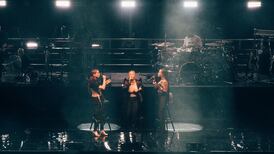Twice within the space of a week I’ve had concert-goers approach me to bemoan the size of the attendance at an RTÉ orchestral concert.
Personally, I don’t get that exercised about the size of the house. In fact, at the National Concert Hall, where both of the RTÉ concerts took place, the sound is better if the hall is less than full. And I’ve been at great concerts with small attendances and at dull ones where every seat was sold.
But I can think of a lot of reasons why regular attendees would become concerned. It’s not just the bean counters in organisations like RTÉ who worry about fluctuations in box office. So if you’re dependent on the national broadcaster for your regular supply of orchestral concerts, any blip in attendance can be worrying.
There’s another factor that might best be related to the experience of being at a sporting event or eating out in a restaurant. All other things being equal, the buzz of a capacity crowd or a full house is something special. That sense of a community experience matters in music too, a fact that’s attested to by the current fad for instant standing ovations.
Professionally, of course, I’m always interested in the size and composition of whatever audience turns up for a concert. It’s an ongoing fascination to try and work out what factors have gone into a particular turnout.
The reality can sometimes be surprising. The late John Ruddock of the Limerick Music Association had in his heyday a very dedicated following. It was large enough for him to use the main auditorium of the National Concert Hall for solo recitals and chamber music. I remember an occasion when the house seemed unusually small, well below the numbers I would have expected. It only made sense when you factored in the clash with the Eurovision Song Contest. Even chamber music aficionados get sucked in by the spectacle of that particular show.
Promoters
Regular promoters of classical music need to have a solid grasp of why particular choices work and others do not.
There's a wide range of received opinion on orchestral concerts. The subject came up when I interviewed the late Neville Marriner at his home in London 10 years ago. From a London perspective he put the soloist as the number one consideration, then the repertoire, then the conductor, and then the orchestra. I'm sure Marriner knew that he was probably famous enough to counter the priorities he was describing.
I’ve been told of market research by a US orchestra that came up with an entirely different order of priorities. The conductor came in at 11th, and up at the top was the day of the week – the orchestra in question is popular enough to have to repeat its weekly programmes.
But, even in Dublin, the day of the week does matter, and there were howls of protest when the NSO (or the RTÉ Symphony Orchestra as it then was) changed its subscription concert night. In the 36 years since the opening of the NCH those concerts were on Sundays and Wednesdays before settling on the current day, Friday.
It’s generally the case that the inclusion of unfamiliar repertoire, especially a new work, tends to drive numbers down. This seems to be true even when the work in question is effectively an extra to an already complete programme, an ingredient X added to an already satisfactory A, B and C.
Repertoire
Think of this in restaurant menu terms and you’ll see exactly what is going on. If you’ve an aversion to chillies, or eggs, or beef, there are certain dishes on the menu that you won’t even countenance for a moment, no matter what other ingredients that you love are also involved.
Orchestras get through vastly more repertoire than theatre companies, and the range of music that’s on offer in Ireland is very wide indeed. Some time ago I calculated that I had heard more than 750 works in live performance in a 12-month period. Not many music-lovers ever think of rivalling that level of exposure, and I only managed it by dint of an inclusive curiosity that is part of my professional remit.
One of the most obvious facts about musical audiences is how they change from night to night and venue to venue. There are people who like organ recitals and others who avoid them like the plague. People who love the violin do not necessarily go to piano concerts, and vice versa. This is as obvious as the fact that film buffs who are interested in Werner Herzog may not show up at the latest Hollywood blockbuster.
Film producers, of course, know all about the importance of the elements that convince people to go to or purchase a film. The presence of actor Samuel L Jackson was crucial to the film Snakes on a Plane, which was an internet sensation even before its release in 2006. Without him it would probably have been just another low-grade action movie.
Actual turnout
So when someone wonders about an attendance that's lower than they expected for Andrew Parrott conducting the RTÉ Concert Orchestra, or Tung-Chieh Chuang conducting the NSO, I'm more surprised at their surprise than at the actual turnout.
The balance of the various elements is just not appealing enough to a large enough group of people.
It's just over a year since RTÉ lost the nearest thing it had to a sure-fire musical draw when the principal conductor of the RTÉ CO, John Wilson, exited his contract seven months early. Wilson was like the rising tide that lifted all boats for RTÉ CO concerts. Since then both RTÉ orchestras have been without the nurturing and stabilising force that a principal conductor can provide. It's not a healthy situation. mdervan@irishtimes.com










